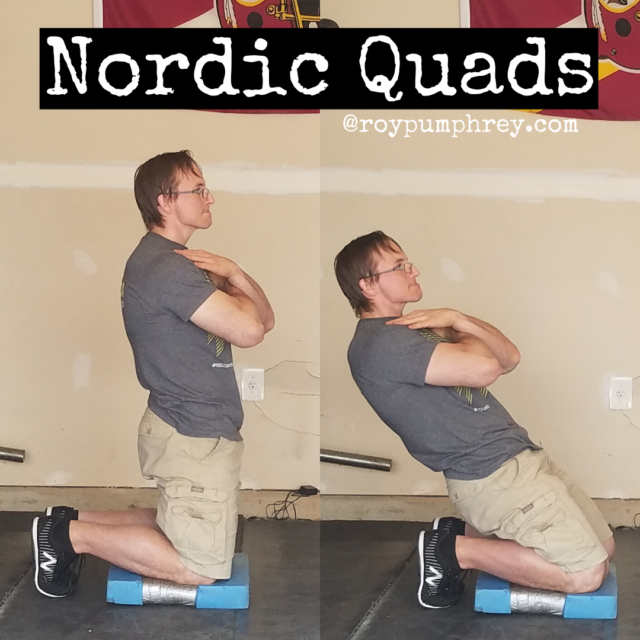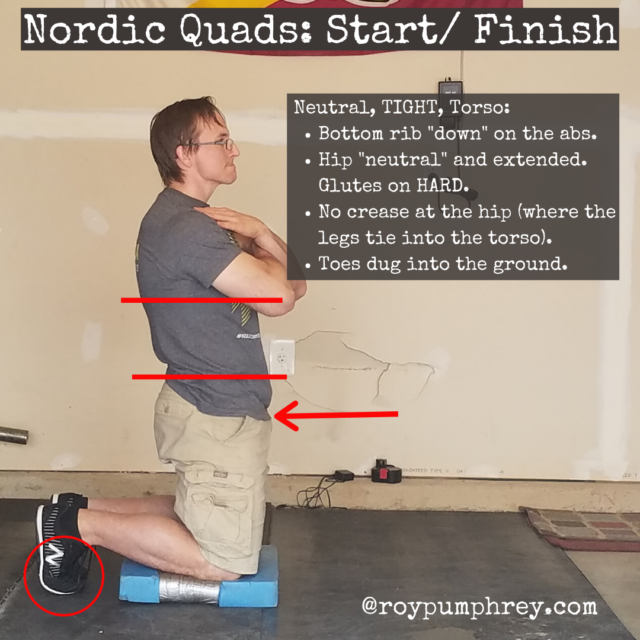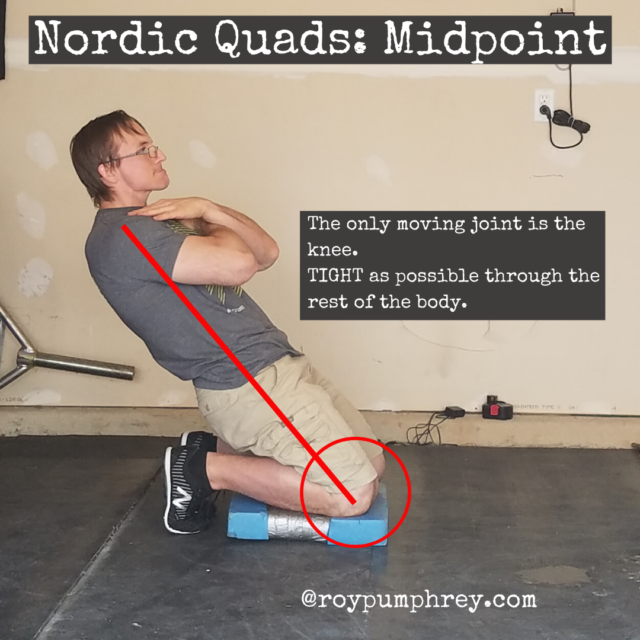Nordic Quads

Three words that strike fear into the heart of any client…..
Glute Ham Raise…
this shit is INSANE, they ain’t that easy…
Tyreek Hill runs VERY fast.
His hamstrings are VERY strong, eccentrically/ concentrically, repeatedly, huh…
“subjects who produced the greatest amount of horizontal force were both able to highly activate their hamstring muscles just before ground contact and present high eccentric hamstring peak torque capability.” – Sprint Acceleration Mechanics: The Major Role of Hamstrings in Horizontal Force Production
just saying.
Usually GHR’s look more like this:
and I would say these are super good too, except she should probably push off the bottom a bit less to get some concentric action on the way up.
In reality, we don’t do actual GHR (glute ham raise)’s we do Nordic Hamstring Curls.
I don’t actually know if Nordic Hamstring Curls are actually from the land of ice and snow, from the midnight sun where the hot springs flow.
But I do know they are:
- Hard AF
- Make your shit (hamstrings) cramp up like no other.
- Facilitate walking like you just got shot for about 2 days post exposure.
- Are BRUTALLY effective at building eccentric hamstring strength and “bulletproofing” your hamstrings
But this article isn’t (for once) about hamstrings, glutes or the posterior chain.
At least not from this point forward.
It’s about those chicken legs you have.
Quads.
Yes, it probably seems like I poo-poo them often.
But it’s not because I don’t like them, or I think they’re not important.
I just think, on balance, people have way more quads (anterior chain) than glutes and hams (posterior chain) and that can get ya some nice knee, hip and low back pain.
That said, Quads are important too.
“Knee osteoarthrosis (KOA) is commonly associated with a dysfunction of the quadriceps muscle which mainly contributes to alterations in motor performance. The quadriceps muscle is functionally important for knee joint stabilization and a persistent weakness reduces the protective force generated at the knee joint. Sensorimotor dysfunction of the quadriceps muscle is even regarded as being associated with progression of KOA. It has been shown that the restoration and improvement of muscle function lead to improved symptoms and joint structure , and there is a growing body of evidence showing that exercise can improve muscle strength, physical function and walking ability in KOA patients. Furthermore, studies have shown that preoperative quadriceps strength is a predictor for postoperative muscle strength and functional outcome following total knee arthroplasty.”- Neuromuscular function of the quadriceps muscle during isometric maximal, submaximal and submaximal fatiguing voluntary contractions in knee osteoarthrosis patients
Yes, I know that study is from people already WITH knee osteoarthristis and you might not have KOA (knee osteoarthritis).
But I’m making the guess that the same protective mechanism the quads have on the knee holds true if your quads are good and strong BEFORE you jack the knees up.
Nordic Quads
Just like their Nordic namesake brethren, Nordic Quads involve a BIG eccentric (stretching) load on the working muscles, in this case, quads.


Key Points:
- Drive your toes into the ground.
- Find a spine and KEEP IT.
- Ribs down
- Neutral pelvis
- Glutes contracted HARD.
- Smoothly flex the knees, keeping the torso “tall”, “stiff”, rigid” and ENGAGED
- Out of the bottom think about squeezing your glutes and pressing forward while PULLING the quads together in the front.
Bro Tips:
- Yeah, I know toes pointed allows for more range of motion, and I can’t tell you exactly why, but keeping a HARD flex at the ankles and driving the toes into the ground seems to allow better control of the motion and keeps people from unloading at the end range of motion.
- My guess is that the hard dorsiflexion helps create some anterior tension, like the “up” leg on single leg glute bridges, and this allows for a better “mind muscle connection” through the quads…but that’s a guess.
- On the way down, think about the hamstrings “pulling” you down.
- If YOUR knees don’t feel right doing these, DONT DO THEM.
- I like this movement and do think its generally safe for the knees. Unless it’s not.
- I’m not 100% sure why, but for the longest time, I was VERY hesitant to do this movement for fear of the stress across the knee. For me, it was FINE..but I still get the feeling, that like ALL exercises, it might not be right for you.
I’m pretty conservative with loading these.
I think once you can do a really smooth, tight, unbroken set of 12-15 reps you can add some weight.
The most manageable way to do this seems to be just holding a plate or sandbag across the chest or kettlebell in the goblet position.


